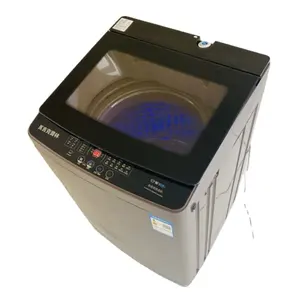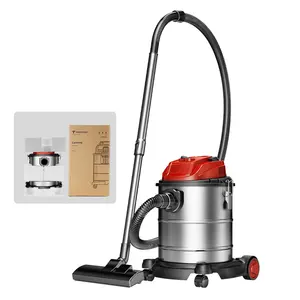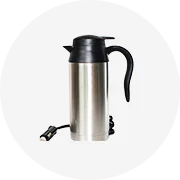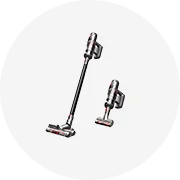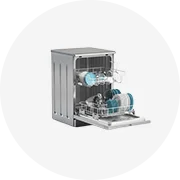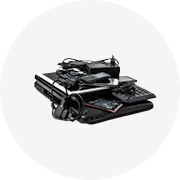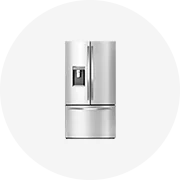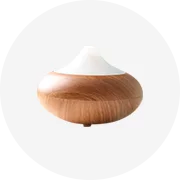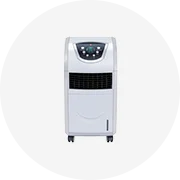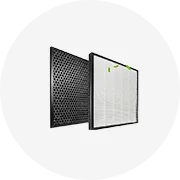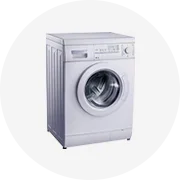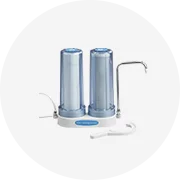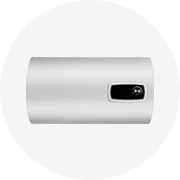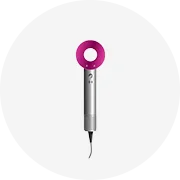Popolare nel tuo settore






Parrucca da donna in stile europeo bionda in pizzo pieno in seta con Base di parrucca da gioiello in stile cinese con capelli umani lisci e capelli umani
326,50 € - 932,84 €
Ordine minimo: 1 parte






Parrucche senza colla per capelli umani in pizzo con capelli lunghi lunghi e ricci 360 capelli umani in pizzo per donne nere parrucche anteriori in pizzo

15,77 € - 27,90 €
Ordine minimo: 1 parte







Parrucca lunga diritta del merletto svizzero di estensione dei capelli parrucche sintetiche del merletto 150% parte centrale resistente al calore ad alta temperatura di densità 180%
Pronto per la spedizione
16,33 €
Ordine minimo: 1 parte
Spedizione per pezzo: 15,36 €














Parrucche per capelli Rietnamese grezzo con onda profonda 13x6 parrucche per capelli umani anteriori in pizzo per donne nere
18,66 € - 26,12 €
Ordine minimo: 1 parte







Parrucche Afro crespo ad alta densità con frangia Non pizzo naturale vergine capelli umani parrucche all'ingrosso a buon mercato parrucche a Bob

11,32 € - 33,22 €
Ordine minimo: 2 parti


Fabbrica professionale vendita 100% umano capelli parrucca ebraica/kosher parrucca
93,29 € - 279,86 €
Ordine minimo: 1 unità






Professionale Puro Fatto A Mano Parrucche Dei Capelli Umani Raw Indiano Onda Profonda Dei Capelli Umani Anteriore Del Merletto Parrucche
Pronto per la spedizione
31,72 € - 159,52 €
Ordine minimo: 2 parti
Spedizione per pezzo: 9,33 €






Professionale anteriore del merletto sintetico di Santa parrucca e barba set di lusso dei capelli di natale
93,29 € - 279,86 €
Ordine minimo: 10 insiemi



Produttori alla ricerca di distributori professionale quality100 % sintetica dei capelli a buon mercato 3/4 cap parrucca di colore biondo parrucca di capelli
14,00 € - 27,99 €
Ordine minimo: 30 parti






Guangzhou wahl tagliatore di capelli professionale onda naturale anteriore del merletto dei capelli umani parrucche con i capelli del bambino
79,30 € - 214,56 €
Ordine minimo: 1 parte
Ricerche correlate:
professionale parrucche dei capelli fabbricaparrucche uguali capelliparrucche russe dei capelliparrucche dei capelli della filippinaparrucche dei capelli dello yakparrucche dei capelli futuriparrucche dei capelli grigiparrucche dei capelli paulaparrucche dei capelli caucasiciparrucche verdi dei capelliparrucche premium dei capelliparrucche francese dei capelliparrucche dei capelli di scenaparrucche dei capelli di yaky all'ingrossoparrucche dei capelli beyonce






Hot Vendita Diretta Della Fabbrica Produttore Professionale Dei Capelli Umani della Parrucca Della Fascia
Pronto per la spedizione
37,32 € - 39,18 €
Ordine minimo: 2 parti
Spedizione per pezzo: 5,71 €






Parrucca frontale in pizzo sintetico dritto e setoso in pizzo trasparente, pratica parrucca professionale sintetica per capelli
Pronto per la spedizione
32,65 € - 37,32 €
Ordine minimo: 1 parte
Spedizione per pezzo: 27,24 €






Parrucche diritte dei capelli della radice nera di colore Ombre 99J del produttore professionale di sconti elevati
Pronto per la spedizione
82,22 € - 227,15 €
Ordine minimo: 1 pacchetto
Spedizione per pezzo: 24,93 €






Parrucche professionali Remy cuticola allineata capelli umani Undectable Swiss Hd Lace Part Water Curls parrucca
35,45 € - 44,78 €
Ordine minimo: 1 parte






Parrucca frontale professionale all'ingrosso brasiliana HD per capelli donna 13x4 in pizzo trasparente parrucca frontale colore 27/613 lunghezza 24 pollici

36,09 € - 46,52 €
Ordine minimo: 1 sacco






Diretto dalla fabbrica di alta qualità bianco grigio parrucche per Babbo Natale-professionale capelli Yak padre natale parrucca
11,11 € - 14,00 €
Ordine minimo: 1 parte






AfroTop Grado Vergine Corti Marley Bob Professionale di Curling Capelli Unità Alipearl Jerry Crespa Naturale Orecchio Afro CurlsHuman Parrucche Dei Capelli
Pronto per la spedizione
10,87 € - 72,77 €
Ordine minimo: 2 parti
Spedizione per pezzo: 14,00 €






Parrucche anteriori del merletto di colore naturale dei capelli veri professionali al 100% parrucche anteriori del merletto dei capelli umani per le donne nere
93,29 € - 223,89 €
Ordine minimo: 1 parte






Parrucca frontale professionale in pizzo misto capelli rossi
Pronto per la spedizione
3,33 € - 4,66 €
Ordine minimo: 3 parti
Spedizione per pezzo: 6,91 €






Parrucche professionali capelli capelli capelli umani mescolati ricci
21,46 € - 30,79 €
Ordine minimo: 2 parti






Parrucca per capelli da 14 pollici di fabbrica parrucca per capelli professionale marrone rosso nero parrucca per capelli professionale
8,40 € - 9,33 €
Ordine minimo: 200 parti






Parrucche corte professionali Bob Pixie Cut T parte centrale 100% parrucca sintetica bianca grigia nera con un prezzo economico
3,72 € - 11,83 €
Ordine minimo: 1 parte






AMLHAIR produttore professionale parrucche per capelli economici umani con estensione dei capelli naturali
92,36 € - 185,64 €
Ordine minimo: 10 parti






Women's Professional supplier women hair wigs lace front human hair wigs extension Brazilian Virgin hair wigs
33,49 € - 42,82 €
Ordine minimo: 2 parti






Parrucche per capelli corti di Design professionale parrucche per capelli umani Remy di colore diverso
Pronto per la spedizione
24,26 €
Ordine minimo: 1 parte
Spedizione per pezzo: 19,68 €






Tagliacapelli professionale osso dritto parrucca di capelli umani parrucche bob capelli umani pizzo anteriore
33,59 € - 45,62 €
Ordine minimo: 1 parte






Esportatori di forniture professionali parrucche per capelli umani con frangia colore nero naturale 13*4 parrucca frontale in pizzo dritto per regalo di natale
107,28 € - 368,48 €
Ordine minimo: 1 parte






Capelli timidi su misura 2024 nuovo Design capelli umani grezzi HD 13x5 Patch parrucche frontali in pizzo professionale salone Stylist colore Balayage
438,44 € - 466,42 €
Ordine minimo: 1 parte





Capelli timidi su misura 2024 nuovo Design capelli umani grezzi HD 13x5 Patch parrucche frontali in pizzo professionale salone Stylist colore Balayage
541,05 € - 548,51 €
Ordine minimo: 10 parti




Alla moda e professionale capelli umani corti parrucca per le donne regalo perfetto per la mamma
13,43 € - 13,62 €
Ordine minimo: 3 parti






Professionale Cuticola Allineati Onda Naturale Verde Scuro 100% Blazers Delle Donne Delle Signore Del Merletto Dei Capelli Umani di Remy Parrucche Anteriori Con Scoppio Accurato
Pronto per la spedizione
88,62 € - 167,92 €
Ordine minimo: 1 parte
Spedizione per pezzo: 13,33 €






Commercio all'ingrosso Del Virgin Dei Capelli Umani Parrucche Onda Riccia Anteriore Del Merletto Parrucche Pre Colto Linea Dei Capelli Con I Capelli Del Bambino
70,81 € - 252,52 €
Ordine minimo: 2 parti






Amara best sale maschio 4/27 fronta pizzo top quality all'ingrosso evidenzia parrucca anteriore in pizzo parrucche in stock parrucche per capelli umani
51,31 € - 210,83 €
Ordine minimo: 1 coppia
Migliori categorie
Su parrucche professionali dei capelli
In precedenza, le persone dovevano visitare i barbieri ogni volta che volevano tagliarli o tagliarli. L'arrivo di. parrucche professionali dei capelli ha reso facile per le persone acconciare e tagliare i capelli a casa. Alibaba.com ne offre molti. parrucche professionali dei capelli progettato in modo esclusivo per facilitare e lenire le tue attività di cura dei capelli. Cerca tra migliaia di siti di alto livello. parrucche professionali dei capelli marchi e venditori per regalarti un nuovo look per capelli lisci.
parrucche professionali dei capelli sono kit fai da te perfetti per le persone che cercano di risparmiare tempo e denaro nell'igiene e nella cura della persona. Queste. parrucche professionali dei capelli utilizza una tecnologia di alimentazione durevole per fornire diversi minuti di potenza di taglio senza fili. Il. parrucche professionali dei capelli hanno una struttura impermeabile e robuste lame da taglio. Sono progettati per offrire prestazioni e affidabilità di lunga durata, portando a casa la comodità di cui uomini, donne e bambini hanno bisogno quando si tratta di toelettatura personale.
parrucche professionali dei capelli può essere utilizzato per radere, rifinire o tagliare i peli lunghi e corti praticamente su qualsiasi parte del corpo. Queste qualità da salone. parrucche professionali dei capelli hanno punte, spazzole e pettini delicati sulla pelle per rendere divertente l'acconciatura fai-da-te. La maggior parte della. Le parrucche professionali dei capelli sono perfette per scollature, basette, barba, capelli e fodere. Possono ridurre i tuoi viaggi dal barbiere e farti risparmiare tempo e denaro.
Sfoglia Alibaba.com per confrontare tascabili. parrucche professionali dei capelli di diversi marchi, fornitori e produttori affidabili e più venduti in tutto il mondo. Cerca e trova la migliore qualità. parrucche professionali dei capelli per regalarti tagli di capelli fantasiosi e alla moda a casa. Acquista ora per scoprire e approfittare di offerte speciali e incredibili occasioni.
Sfoglia Alibaba.com per confrontare tascabili. parrucche professionali dei capelli di diversi marchi, fornitori e produttori affidabili e più venduti in tutto il mondo. Cerca e trova la migliore qualità. parrucche professionali dei capelli per regalarti tagli di capelli fantasiosi e alla moda a casa. Acquista ora per scoprire e approfittare di offerte speciali e incredibili occasioni.


